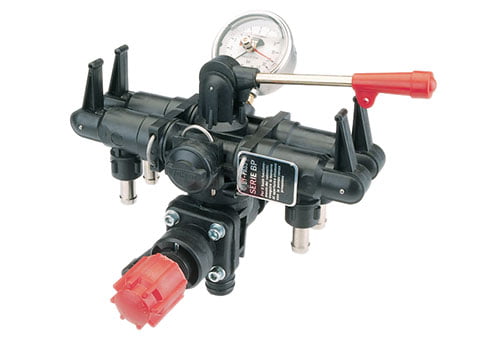Enhancing Operational Efficiency with Advanced Control Valves
Enhancing Operational Efficiency with Advanced Control Valves
Blog Article

Maximize Power Financial Savings and Convenience With Advanced Structure Automation Controls
In the realm of modern-day architecture and center monitoring, the assimilation of sophisticated structure automation regulates stands as a pivotal development. The merging of modern technology and sustainability has actually birthed a brand-new era where power efficiency, comfort optimization, and operational streamlining are no much longer distant aspirations yet achievable truths. By harnessing the power of automation, structures can adjust, respond, and develop in methods that were once unbelievable. The capacity for significant energy cost savings and boosted convenience is not simply a possibility yet a promise waiting to be met. This paradigm change in building monitoring holds the vital to opening a globe where environmental conscientiousness and owner wellness sympathetically coexist within the wall surfaces of our structures.
Energy Effectiveness Conveniences
Energy effectiveness benefits can dramatically reduce energy usage and functional prices in structures. By implementing energy-efficient practices and innovations, building owners and operators can accomplish significant financial savings while also contributing to environmental sustainability. Among the key advantages of improving energy effectiveness in structures is the decrease of utility bills. Energy-efficient systems, such as advanced structure automation controls, can enhance using sources like lights, home heating, and cooling, bring about reduced power costs gradually.
Moreover, enhanced power effectiveness can extend the lifespan of structure tools and systems. By operating much more efficiently, heating and cooling systems, light, and various other structure elements experience less damage, resulting in reduced upkeep and substitute prices. Furthermore, energy-efficient buildings often command greater home values and rental rates, giving lasting financial benefits to owners.
Moreover, power effectiveness can boost resident convenience and productivity. Appropriately managed indoor atmospheres with optimum lighting and thermal problems develop a more pleasurable and helpful workspace, resulting in boosted employee fulfillment and efficiency. Overall, the energy effectiveness advantages associated with advanced building automation controls are complex, encompassing expense financial savings, environmental stewardship, and resident well-being.
Enhanced Comfort Control
Enhancing convenience control in structure atmospheres requires an innovative assimilation of sophisticated automation systems for optimal owner health. By using advanced structure automation controls, centers can tailor the interior setting to satisfy the specific needs and choices of passengers. control valves.
By incorporating these innovative controls, buildings can not just boost comfort yet likewise boost energy effectiveness by optimizing system procedures based on real occupancy and use patterns. Inevitably, prioritizing passenger convenience via innovative automation systems leads to a more satisfying and much healthier indoor environment.
Functional Performance Improvements

In addition, the application of real-time surveillance and analytics devices enables structure operators to identify power ineffectiveness and operational abnormalities quickly. By constantly checking power usage patterns and system performance metrics, modifications can be made in real-time to maximize power consumption and guarantee peak functional performance. control valves. In addition, incorporating demand reaction approaches right into building automation controls can even more improve functional performance by dynamically adjusting energy usage based on grid conditions and pricing signals
Indoor Climate Optimization
Effective indoor climate optimization is an essential element of structure automation controls, making certain occupants' comfort and well-being while taking full advantage of power financial savings. By utilizing innovative sensing units and controls, developing automation systems can continually keep track of and adjust temperature, humidity degrees, air top quality, and air flow to produce an optimal indoor environment. Keeping comfortable and consistent conditions not just improves passenger contentment yet likewise increases productivity and overall health.
Interior environment optimization likewise plays a vital function in energy efficiency. By fine-tuning ventilation, cooling, and heating systems based upon real-time data and tenancy patterns, constructing automation controls can dramatically minimize energy intake - control valves. Applying techniques such as demand-controlled ventilation and thermal zoning can assist reduce power waste while guaranteeing that each area of the building receives the needed conditioning.

Sustainable Environment Production
Structure automation manages not only optimize interior environment conditions for energy performance and owner convenience however also lay the foundation for developing a lasting environment through critical administration of see here now resources and systems. By integrating advanced structure automation innovations, such as sensors, actuators, and intelligent software, centers can monitor and readjust power use in real-time to decrease waste and minimize their carbon impact. These systems make it possible for anticipating upkeep, determining prospective problems before they rise and enhancing equipment efficiency to enhance durability and efficiency.
In addition, sustainable environment development extends past energy monitoring to include water preservation, waste reduction, and interior air high quality renovation. Building automation controls can manage water usage, spot leakages, and guarantee proper garbage disposal methods, adding to general sustainability initiatives. Furthermore, by regulating and checking ventilation and purification systems, these technologies improve occupant health and wellness and productivity while reducing energy usage related to cooling and heating operations.
Conclusion
In verdict, progressed structure automation regulates deal considerable benefits in terms of energy cost webpage savings, convenience control, functional efficiency, indoor climate optimization, and producing a lasting setting. By implementing these controls, buildings can accomplish ideal efficiency while reducing energy consumption and enhancing passenger convenience. It is evident that the use of sophisticated automation modern technology is essential in improving structure efficiency and producing an extra lasting future.
Power performance advantages can significantly decrease energy consumption and operational costs in buildings. Overall, the energy efficiency benefits connected with sophisticated structure automation controls are multifaceted, encompassing expense savings, ecological stewardship, and occupant health.
Additionally, incorporating need reaction techniques right into structure automation controls can even more enhance functional effectiveness by dynamically adjusting power usage based on grid problems and prices signals.
Building automation manages useful site not only maximize indoor environment problems for energy performance and passenger comfort yet likewise lay the foundation for creating a sustainable environment via calculated administration of resources and systems.In conclusion, progressed structure automation manages offer significant benefits in terms of energy savings, convenience control, functional performance, interior environment optimization, and producing a lasting environment.
Report this page